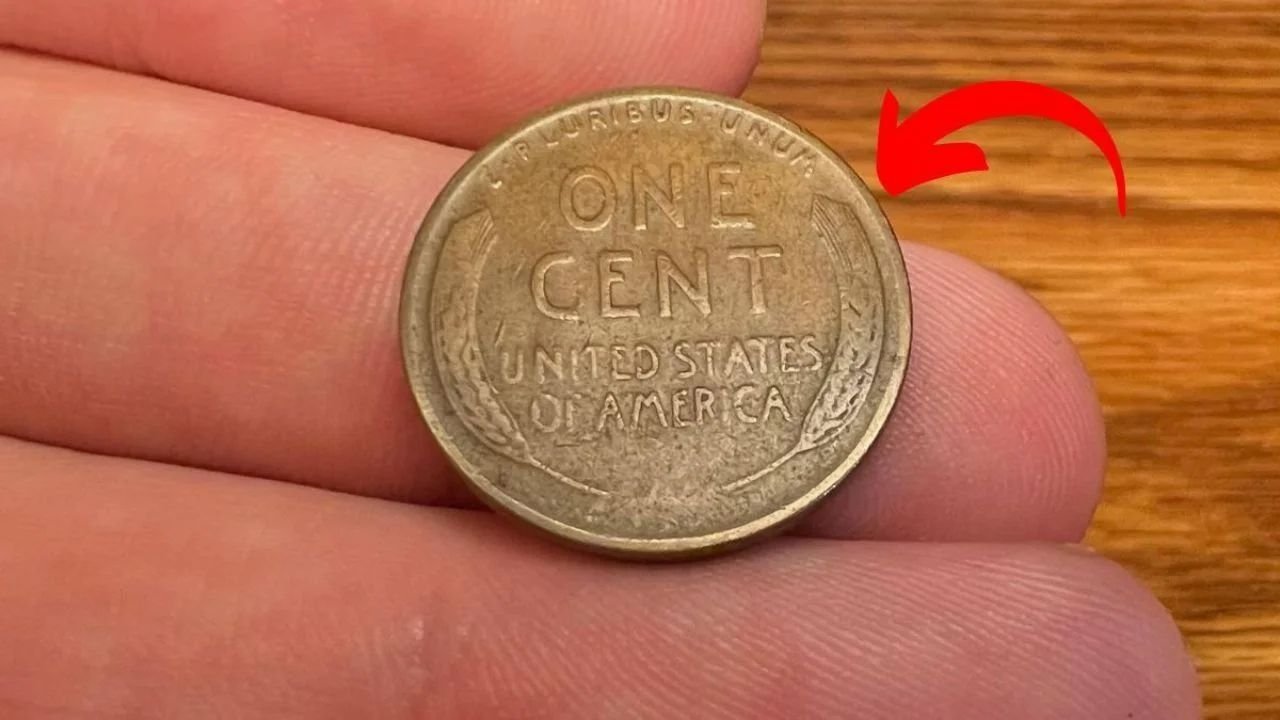When you think of a penny, you probably imagine a small, nearly worthless coin that’s easy to overlook. But what if we told you that one of these common-looking coins—the Lincoln Wheat Penny—could actually be worth up to $880,000? That’s not just a collector’s dream; it’s a real possibility, and what’s even more fascinating is that this coin might still be hiding in plain sight, possibly even in circulation today.
In this article, we’ll explore the story behind the Lincoln Wheat Penny, what makes it so valuable, how to identify one, and whether you might already have this rare gem in your change jar.
A Brief History of the Lincoln Wheat Penny
The Lincoln Wheat Penny made its debut in 1909, commemorating the 100th birthday of President Abraham Lincoln. It was the first U.S. coin to feature the portrait of a real person. Designed by Victor D. Brenner, the coin’s front side shows Lincoln’s profile, while the reverse side is adorned with two wheat stalks—giving it the nickname “Wheat Penny.”
These pennies were produced until 1958, after which the U.S. Mint replaced the wheat design with the Lincoln Memorial. Over nearly 50 years of production, billions of these coins were minted—but only a handful are truly worth a small fortune today.
What Makes a Lincoln Wheat Penny Worth $880,000?
Among all the years and versions, one specific error coin stands out—the 1943 copper Lincoln Wheat Penny. During World War II, copper was a critical resource needed for military equipment. To save copper, the U.S. Mint began making pennies out of zinc-coated steel in 1943.
However, a few copper planchets from 1942 were mistakenly used to mint some 1943 pennies, creating a rare and highly valuable copper error coin.
Only a few of these 1943 copper Lincoln Wheat Pennies are known to exist today. They’re considered the holy grail of coin collecting, and one in top condition has sold for as much as $880,000. Private collectors and auction houses are constantly on the lookout for this rarity.
Also Read – Yamaha RX100 Returns with Classic Charm and Timeless Power – A Legend Reborn
Quick Overview: Lincoln Wheat Penny Facts
| Feature | Details |
|---|---|
| Coin Name | Lincoln Wheat Penny |
| Introduced | 1909 |
| Valuable Year | 1943 (Copper Error) |
| Normal Material (1943) | Zinc-coated Steel |
| Rare Material (1943) | Copper |
| Top Auction Price | $880,000 |
| Still in Circulation? | Possibly |
| Unique Design Feature | Wheat stalks on reverse side |
Could a $880K Lincoln Wheat Penny Still Be in Circulation?
It may sound impossible, but yes—it could still be out there. Over the decades, many rare coins have been discovered in everyday places: pocket change, family coin jars, garage sales, and even piggy banks. Since the average person might not know how to distinguish a rare Wheat Penny from a regular one, it’s very possible that someone has unknowingly spent a small fortune on a soda or sandwich.
The rarity and value of the Lincoln Wheat Penny make it one of the most intriguing coins still possibly in circulation.
How to Spot a Rare 1943 Copper Lincoln Wheat Penny
If you’re curious whether you have a rare penny worth life-changing money, here are some quick steps you can take:
1. Check the Date
Look for a 1943 penny. Most 1943 pennies were made of steel, so if you see one that appears copper or brownish in color, you may be looking at something special.
2. Use a Magnet Test
The easiest way to identify the material is with a magnet. Steel is magnetic, but copper is not. If your 1943 penny doesn’t stick to a magnet, you could have a valuable coin.
3. Inspect the Condition
The value of a coin can vary significantly based on its condition. The better the state (no scratches, dents, or signs of wear), the higher the potential value.
4. Avoid Cleaning It
Never attempt to clean an old coin. Doing so can drastically reduce its value. Instead, store it safely and consult a professional numismatist or coin dealer.
Why Collectors Love the Lincoln Wheat Penny
The Lincoln Wheat Penny isn’t just popular for its rare variants; even common versions are beloved by coin collectors. Its classic design, historical significance, and long minting history make it a favorite starting point for beginner collectors.
Even if you don’t stumble upon the elusive 1943 copper penny, you might find Wheat Pennies from early mint years or low-production runs that can still fetch impressive prices—sometimes hundreds or thousands of dollars.
Final Thoughts: Don’t Underestimate the Power of a Penny
In an age where digital wallets and contactless payments dominate, the humble penny may seem obsolete. But the story of the Lincoln Wheat Penny proves that even the smallest and most overlooked coin can hold incredible value.
So, the next time you’re counting change or digging through a dusty old coin jar, take a second look—because you might just be holding a Lincoln Wheat Penny that could change your life.
Some Important Link
| Telegram Group | Click Here |
| WhatsApp Group | Click Here |
| Home Page | Click Here |
